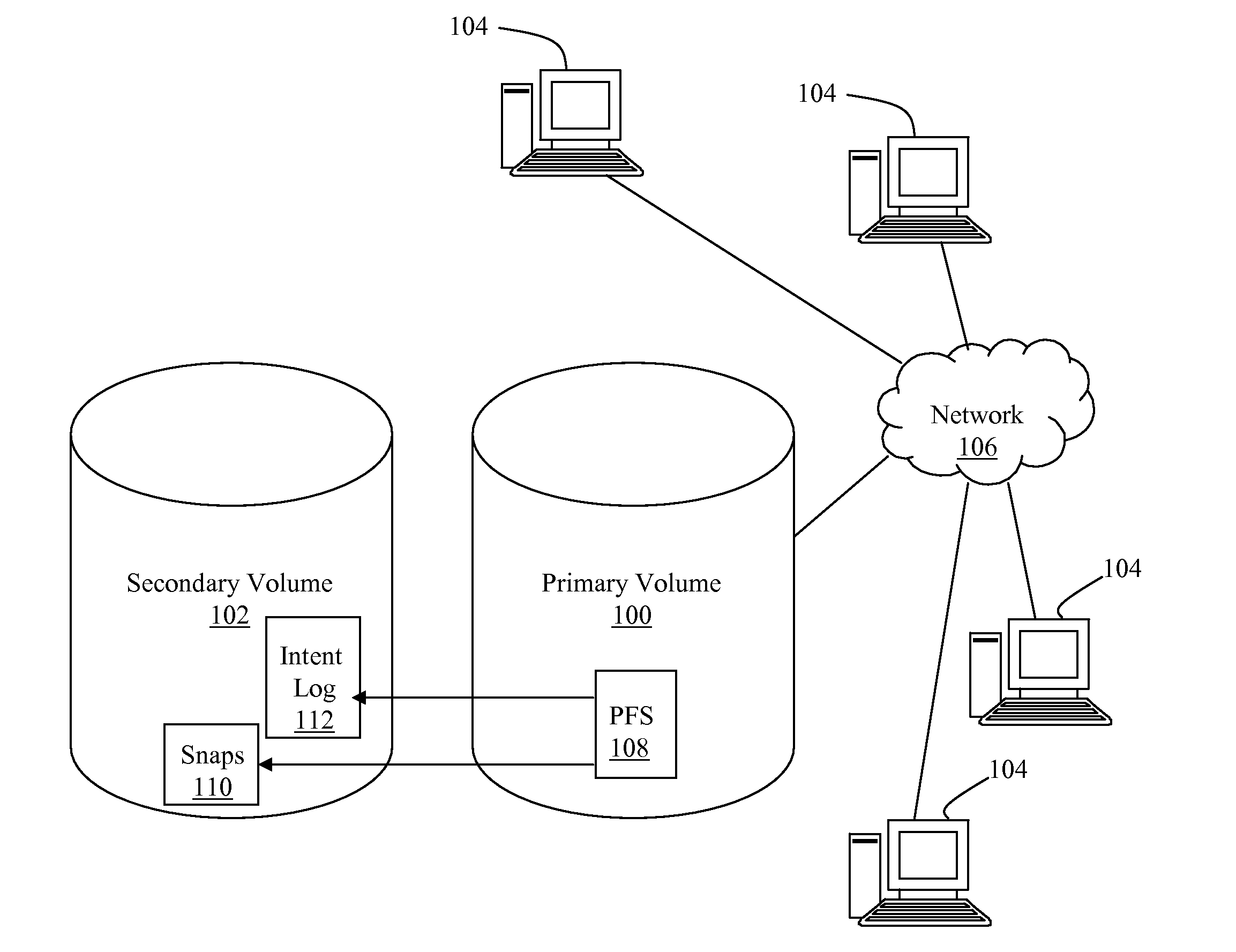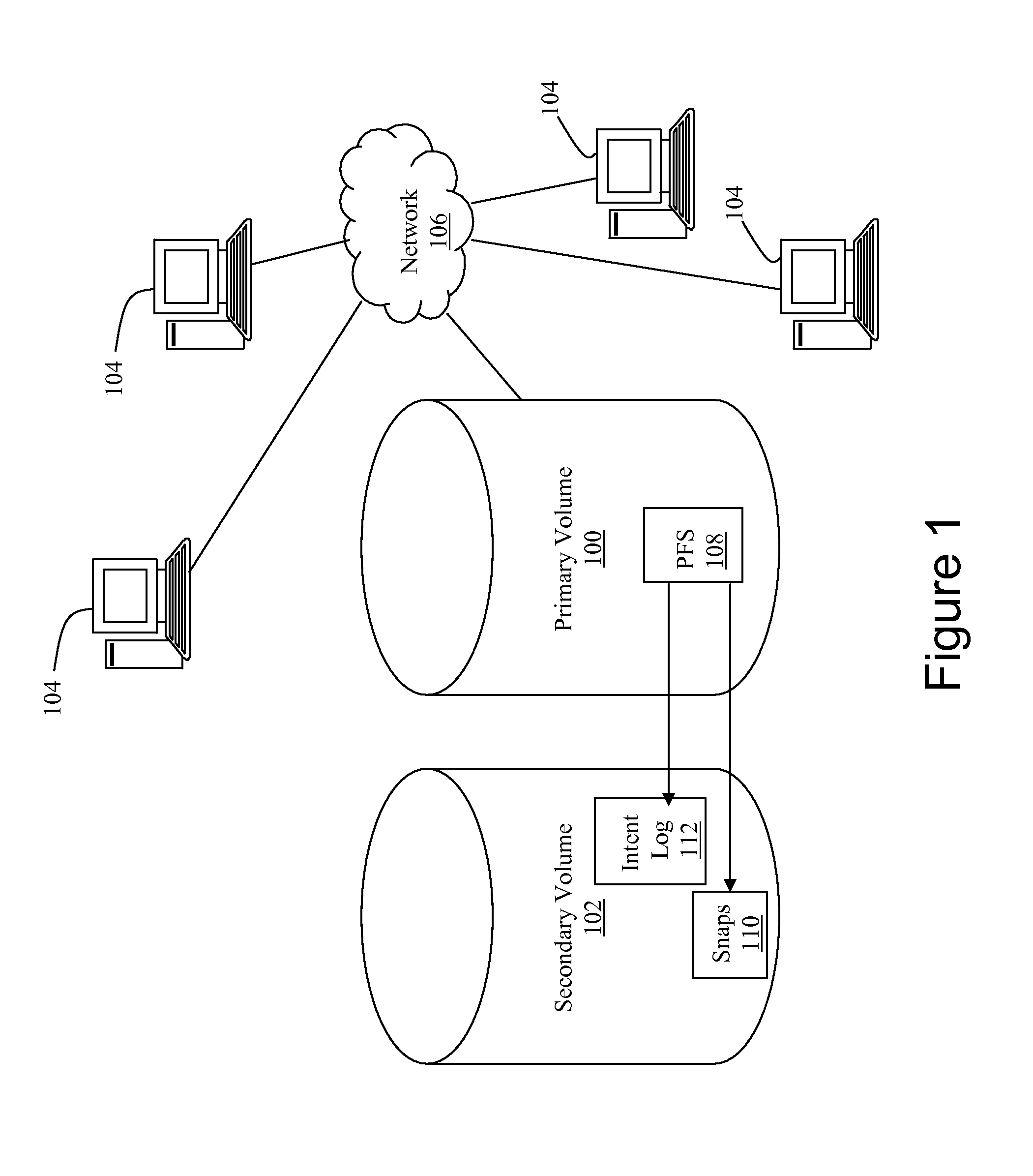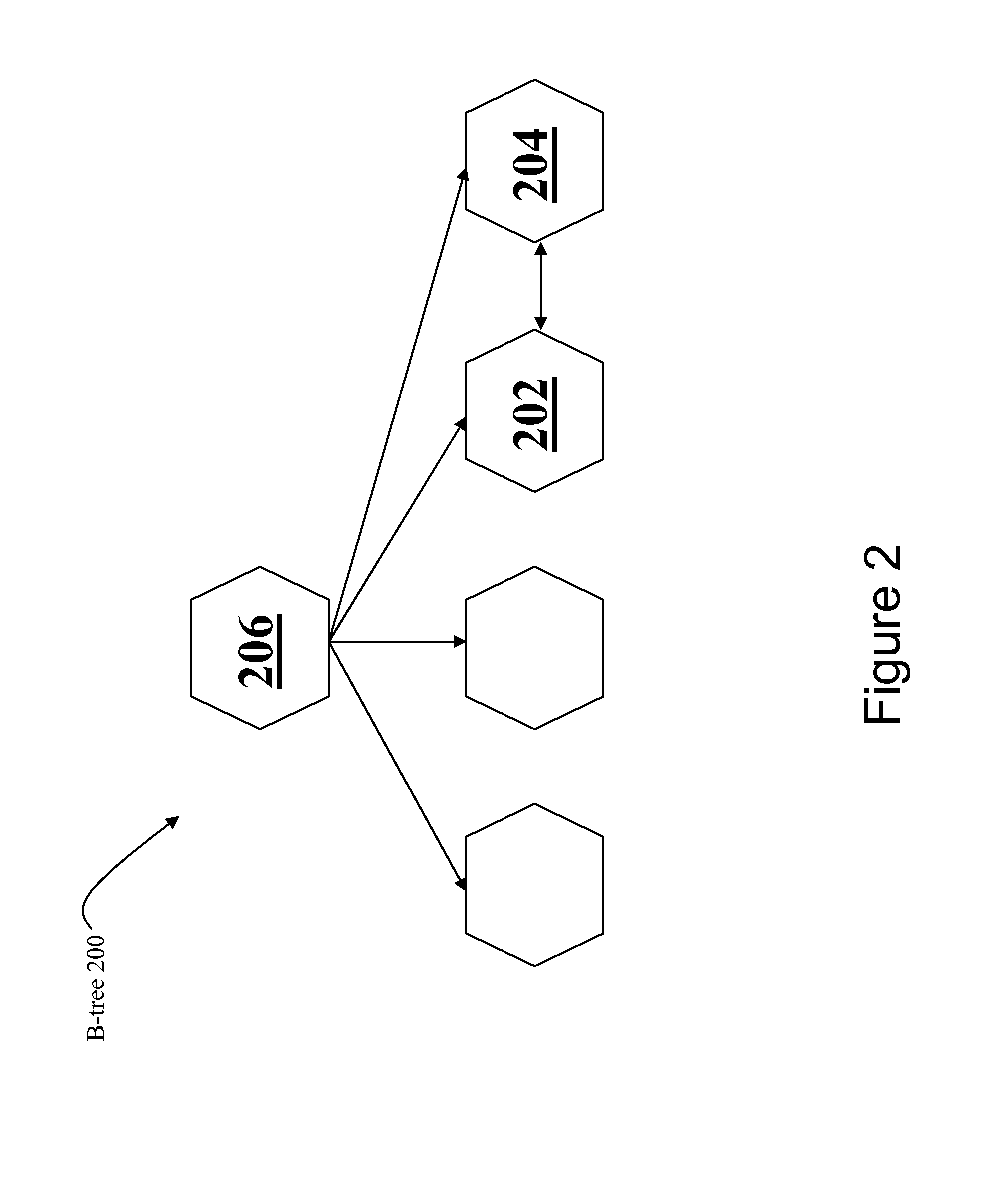Checkpoint recovery using a B-tree intent log with syncpoints
- Summary
- Abstract
- Description
- Claims
- Application Information
AI Technical Summary
Benefits of technology
Problems solved by technology
Method used
Image
Examples
Embodiment Construction
[0012]Referring to FIG. 1, a networked data storage system includes a primary volume (100) and a pointer-based virtual secondary volume (102). Devices (104) in communication with the network (106) utilize the primary volume (100) for data storage. The location of files on the primary volume (100) is referenced by a primary filesystem (108). The secondary volume (102) is employed to maintain checkpoints (110) of the state of the primary filesystem (100) at various points in time. One function of the checkpoints is to enable recreation of the state of the primary filesystem (100) at any of various points in time, including the state just prior to a failure. In other words, the checkpoints (110) include primary filesystem (108) data that has been changed.
[0013]It should be noted that both the primary volume (100) and the secondary volume (102) may be associated with multiple physical storage devices, and may be scaled in m:n relation. In one embodiment, the secondary volume (102) is as...
PUM
 Login to View More
Login to View More Abstract
Description
Claims
Application Information
 Login to View More
Login to View More - R&D
- Intellectual Property
- Life Sciences
- Materials
- Tech Scout
- Unparalleled Data Quality
- Higher Quality Content
- 60% Fewer Hallucinations
Browse by: Latest US Patents, China's latest patents, Technical Efficacy Thesaurus, Application Domain, Technology Topic, Popular Technical Reports.
© 2025 PatSnap. All rights reserved.Legal|Privacy policy|Modern Slavery Act Transparency Statement|Sitemap|About US| Contact US: help@patsnap.com



